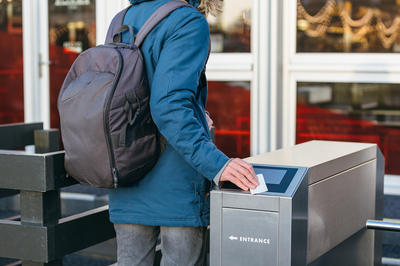
Both sober and halfways houses can be invaluable transitional housing arrangements for recovering addicts.
Many people use the terms sober house and halfway house interchangeably. While they are similar in several ways, they are not the same thing. Here’s a closer look at these two different resources for people in addiction recovery.
Sober and Halfway Houses: Key Similarities
Sober living homes and halfway houses share several commonalities, starting with purpose. Both sober houses and halfway houses provide housing and support for people working on their sobriety who no longer need inpatient treatment.
Both can also be invaluable resources for people who have recently completed residential treatment, attended an outpatient program, or left incarceration by providing several benefits, including holding residents accountable, reducing environmental and emotional relapse triggers, and helping residents live their best lives as part of society.
Sober and Halfway Houses: Key Differences
While sober living homes and halfway houses are similar in the purpose they serve, they do have several differences. For starters, halfway homes are often designated for people who are coming out of incarceration and who underwent a drug treatment program during their incarceration. These types of halfway houses may be sponsored by the state. Additionally, halfway houses customarily require residents to be enrolled in a treatment program or to have recently completed such a program. There may also be a limit on the amount of time a resident can stay at a halfway house.
Unlike halfway homes, sober living homes don’t typically require that residents have been incarcerated. They also may not require that housemates be enrolled in treatment plans while living there.

Transitional housing can also help recovery addicts rejoin the workforce and regain their roles as contributing members of society.
One additional major difference — and benefit — is that sober living homes don’t specify a time limit for residency. According to research published in the Journal of Psychoactive Drugs, “A Clean and Sober Place to Live: Philosophy, Structure, and Purported Therapeutic Factors in Sober Living Houses,” this is, in part, because fees from residents sustain them. This is a major upside for people who are looking for longer-term accountability and community support. This unlimited time can also offer residents the peace of mind they need to truly focus on their recovery as opposed to worrying about where they’ll live when their time runs out.
Lastly, while many sober living homes do not offer formal treatment services, many do belong to coalitions designed to monitor health, safety, quality, and adherence to recovery models which emphasize group involvement and peer support. As such, they may require that residents agree to certain conditions such as abstaining from drugs and alcohol, attending 12-step meetings, attending mandatory house meetings, obtaining a sponsor, sleeping at the house for a minimum number of nights, and being accountable for their whereabouts when not at the sober living home.
Wondering whether a halfway house or sober living home is right for someone you know who is struggling with substance abuse? “A Clean and Sober Place to Live” concludes, “Sober living houses are an excellent example of an underutilized modality that could help provide clean and sober living environments to individuals completing residential treatment, engaging in outpatient programs, leaving incarceration, or seeking alternatives to formal treatment.”
Leading St. Louis drug rehab center Harris House offers two levels of transitional housing designed to provide ongoing and progressive alcohol and substance dependency skills. Call us today to learn about admissions.







